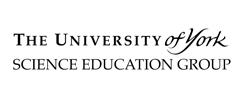Refraction, Lenses, Telescopes and Total Internal Reflection
This topic is covered in most specifications but they don't all have the same emphasis. Depending on which you teach, pick out the sections on telescopes or on refractive index.
The use of lenses fell out of fashion for quite some time in GCSE and so many schools have trays of lenses that have not been used much for a long time. Even if you were not directly teaching optics, lenses and telescopes it seems a real shame not to get the lenses out and at the very least find the focal length of a converging lens. It seems to be a ‘wow’ moment from a few people pretty much every time I do this activity with teachers or students. If you’ve never done this then there are nice clear instructions here from Practical Physics and if you don’t have any lenses then they can be got hold of pretty easily. In the absence of another opinions I’d suggest 50mm diameter converging lenses with focal lengths of 100mm and 500m. These work well for the focal length experiment as well as making a telescope where they need to be 600mm apart and so it all fits on a metre ruler.
The ray diagram provides a really nice example of a model in physics that is predictive and there are plenty online simulations around including PhETs Geometric Optics
Whilst this list provides a source of information and ideas for experimental work, it is important to note that recommendations can date very quickly. Do NOT follow suggestions which conflict with current advice from CLEAPSS, SSERC or recent safety guides. eLibrary users are responsible for ensuring that any activity, including practical work, which they carry out is consistent with current regulations related to Health and Safety and that they carry an appropriate risk assessment. Further information is provided in our Health and Safety guidance
Opticals
A very time consuming part of producing good quality teaching resources is finding or (more often) trying to draw your own diagrams. If that rings a bell with you then you’ll appreciate this collection of images on the theme of optics that you can copy and use in your own worksheets or presentations. What a good idea, it’s just a shame that the resolution isn’t that great so they’re not really suitable for enlarging.
Radiations and Radiating 14-16
The set of resources from the IOP takes a little while to get your head around but repays the effort handsomely. Teachers new to the profession, teaching outside their specialism or simply wanting to refresh their practise will find much food for thought here. The emphasis is on building a really good understanding of wave behaviour and developing precision in thought and language.
Ra1 deals very well with reflection, refraction and ray diagrams.
TRUMP Part 5: Telescopes and Instruments
Modern school text books don’t often include ray diagrams or the lens equation and so this resource, first published in 1999, is useful again now. Although its style and format is rather dated, the information and ideas it contains are still sound and teachers may well like to use them as they stand, or base their own materials on them.
There’s much to explore here but student worksheet 24 (page 4 of the pdf document) is good for lenses and magnification. Students will enjoy building their own telescope; lenses mounted simply in blu-tac on a metre stick work well and bring the subject alive. Those wanting a refresher course will find the notes in the teacher handbook useful. The film at this link is also useful for explaining how telescopes work and demonstrating how to make one: https://sites.google.com/site/quantumboffin/physics-videos/telescopes
The material on refraction and optical fibres is worth looking at too. This is student worksheet 29 (page 34). The analogy with long and short grass is helpful and at this point teachers may want to get the class to model a line of soldiers moving across a boundary between tarmac and mud at an angle
Light Fantastic: the Science of Colour *suitable for home teaching*
There’s a whole lecture here but choose chapter three, a 10 minute clip, for a physicists take on the eye.. The lecturer has an engaging manner and he gives a good overview of the eye’s structure and function He goes on to explore colour vision and makes some good links to genetics. This film would be good to show at the end of a lesson as recap and extension or at the start of the next lesson to remind students of what they have already learnt about.
Dispensing Optics
This series of practical activities with lenses would make a good introductory lesson to the topic. Without needing any complicated setting up or measuring, students should get a good feel for lenses and images. They may also go on to investigate the relationship between the power of a lens and its focal length. There are some very helpful teacher notes and extension activities with a model eye and the lens equation are signposted too.
There is a 7minute film to accompany the activity which shows a couple of students working on an ophthalmic course who make explicit links between their work and the physics they studied at GCSE. The film is most suitable for those who probably won’t go on to study A levels.
All about Telescopes
Here’s a resource that does exactly what it says on the tin. The film entitled “70mm Refractor Telescopes” gives a good introduction to the parts of a telescope and explains how it works whilst the pdf document, “Choosing a Telescope for School” is a really useful document to read before you take the plunge and spend any of your science budget on a telescope.
Making a Spectacle: Videos
After students have learnt about lenses, the first film (3 min) in this trio would be good to show as it gives students a practical application of what they have been learning about. The second film (2.5 min) is not all that exciting but you might like to use it as a follow up to the first showing how the lenses are actually made.
Making a Spectacle: Practicals
“Seeing the Light” makes a lovely introduction to handling lenses. The idea of using old pairs of glasses is great so start collecting them now! Of course you can always supplement your collection with the more conventional school lenses. You might like to introduce more able students to micrometers as suggested here. With less able students, or to speed up the practical, carry it out qualitatively asking students just to sort the lenses into 2 groups.
The “Correcting Lenses” experiment is a rather nice follow on and will stretch more able students.
Episode 317: Reflection and Refraction of Waves
You’ll find everything you need here to get across the concept of refraction including refractive index and Snell’s law. It was designed for use with AS physics students but the content is pretty similar to GCSE physics specifications.
Role playing lines of marching soldiers (pages 2/3) is a very effective at helping students to understand refraction and the demonstration is enhanced if the leading line hold a metre rule or similar along the row as they walk as students will be able to see the change in direction more readily.
At this point teachers might like to use the demonstration mentioned almost in passing on page 19. Fill a test tube with glycerol (propan-1,2,3-triol) and place it in a boiling tube filled with the same liquid. Place the whole thing in beaker and challenge students to spot the tube. Thinking that you refer to the boiling tube they’ll think you’re a bit daft and you can then reveal the test tube inside which they won’t have spotted since glycerol has the same refractive index as pyrex glass. Similarly, let your students drop gel beads into water and then observe them the following lesson when they have swollen and are almost invisible in water. The beads are used by flower arrangers and are readily available fairly cheaply online – but don’t buy the coloured ones. Here's a great film showing this demo.
The resource also provides clear instructions for student practical work and a bank of calculation questions along with teacher tips and worked answers.
Refractive Index Simulation
You’ll probably want to use this simulation after your students have carried out some practical work on your own. If the internet connection in your lab is a bit dodgy, then download it before using it rather than clicking “run now”. It’s been really well thought out and after just a couple of minutes “playing” with it you’ll know how to use it with confidence in your lessons. If you are a bit stuck for inspiration, take a look at the teaching tips. The toolbox is particularly good, allowing measurement of all the angles and the light intensity, everything you need in fact!






